High-flyers for the future: Operators demonstrate benefits of drones
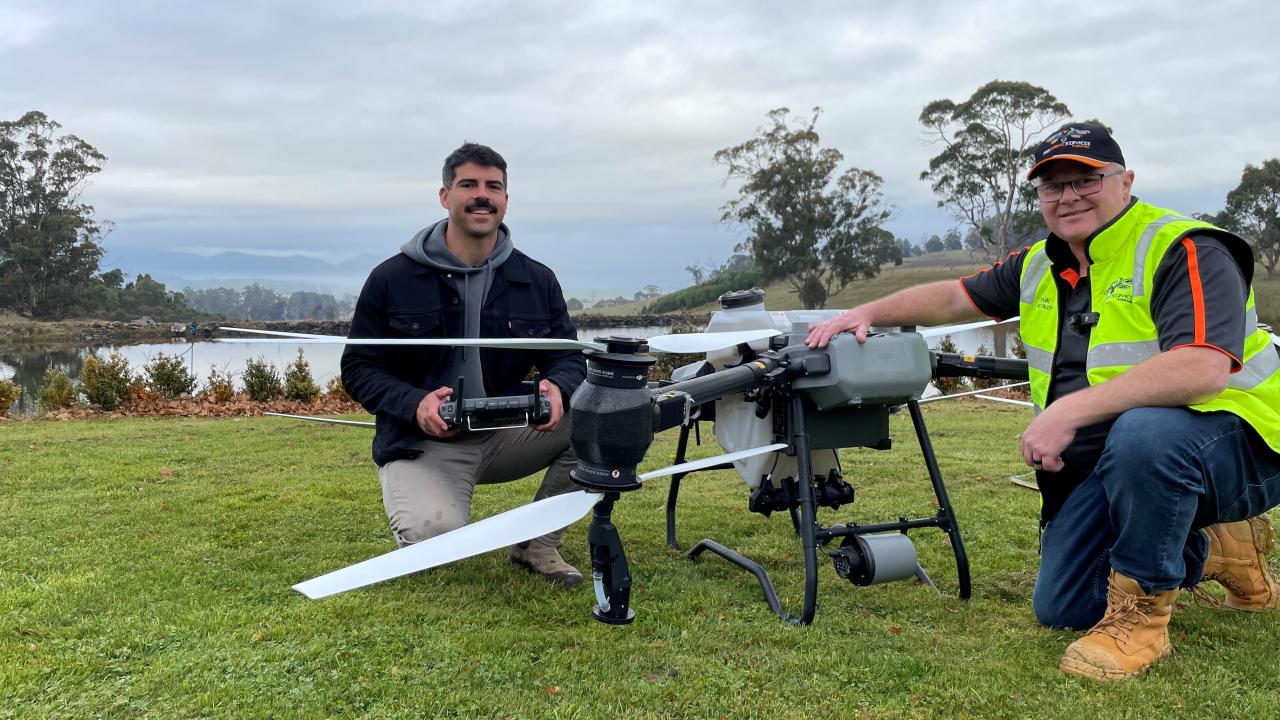
A meeting of innovative minds at the Truffles of Tasmania stand at Agfest has led to a spectacular drone demonstration at the truffle farm at Needles.
More than 30 people involved with farming, land management and drone services were able to see first-hand the full extent of what drones can do with one of the latest models from Mark Dabner’s Smithton-based business Prodrone Tasmania.
Operated by Victorian drone specialist Jim Dula, the Ag T 50, about the size of a box trailer and retailing for $38,000, took flight to demonstrate wet and dry applications on field and preview what is fast becoming the future of farming.
As it whirred quietly around the paddocks, Jim casually handled the controls and talked about what it can carry, the battery life, programming and the farm data it accesses to reduce wastage and use of herbicides and fertilisers.
The drone can be used for spraying, spreading, mapping and planning, helping to streamline operations, find efficiencies and reach places that were traditionally dangerous to cover by vehicle or in some cases, totally inaccessible.
Jim will also be demonstrating the drone at Campbell Town Show today and tomorrow.
Originally from America, he has been drone spraying for many years, having originally been involved in medical cannabis spraying in Colorado.
Truffle farm owners Geoff and Louisa Anderson are considering the use of drones as they diversify the farm and revert land that had unproductive oak trees back into pasture.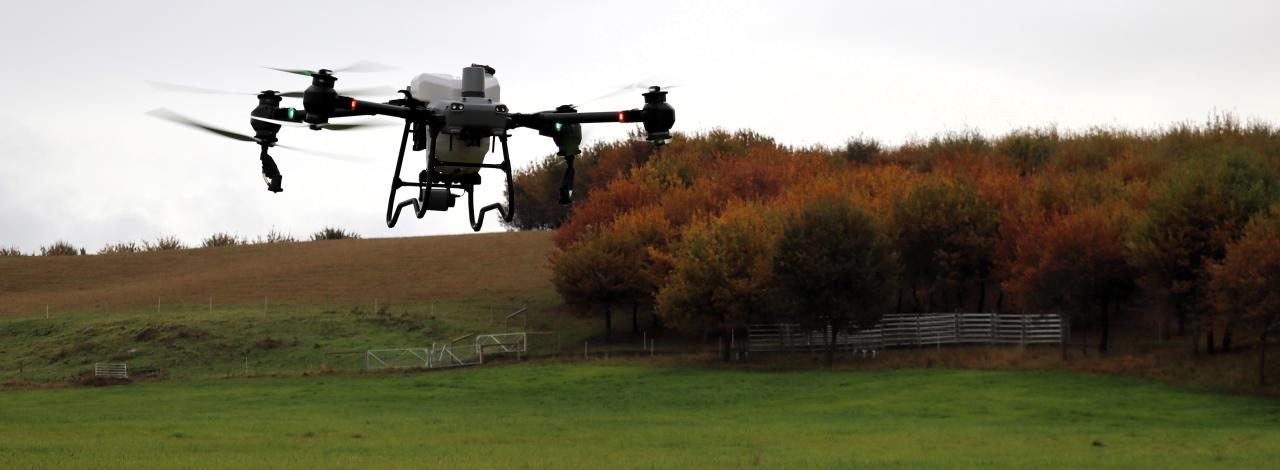
Slug and snail control, spreading fertiliser and spraying blackberries are all applications that they are considering tackling with a drone.
“It could give us the advantage of being able to use it when we want to, including at night, plus the downdraft could move the leaf litter from the trees to get to the long grass and target the weeds on the ground,” Geoff said.
“Thistles can be individually targeted on the rocky areas and during wet periods we could still fertilise because there’s not a tractor running through a boggy paddock.
“We don’t have a large acreage so it’s going to be easier to manage the areas we can’t get to and because we would own it we would be more inclined to use it rather than think of the cost of getting contractors in,” Louisa added.
Prodrone owner Mark Dabner said the event was a great opportunity to show what products exist on the market and what they can do.
“They’re starting to creep into Tasmania now and it would be really great to see the drone industry expanding - whether they be contractors or people buying drones – ultimately it would be nice to have a drone contractor network so operators can work together to meet the needs of farmers around the state.”
“Whether it’s a winery or an apple orchard, you name it and there’s a place for a drone on the farm.”
Mark said that the big ag drones are easy to operate, being slower and more predictable than the small recreational drones where “things can go wrong very quickly”.
John Gardner works as a spray rig operator for Fowler Ag which recently purchased two similar drones to use for spraying crops and grass land, mainly on North-West dairy farms.
He said he is looking forward to getting a drone pilot licence and incorporating drone work into the business.
“We still use Landcruisers and tractors but want to eliminate the risk of accidents in tough country and to enable work to go ahead in wet conditions,” he said.
“There are traditional ways to spray and spread quicker when conditions are ideal, but using drones is the way of the future and a smart way to do some jobs.
“We have interest from the forestry industry to spread tree seed in coupes and that’s all done by helicopter at the moment which is very expensive.”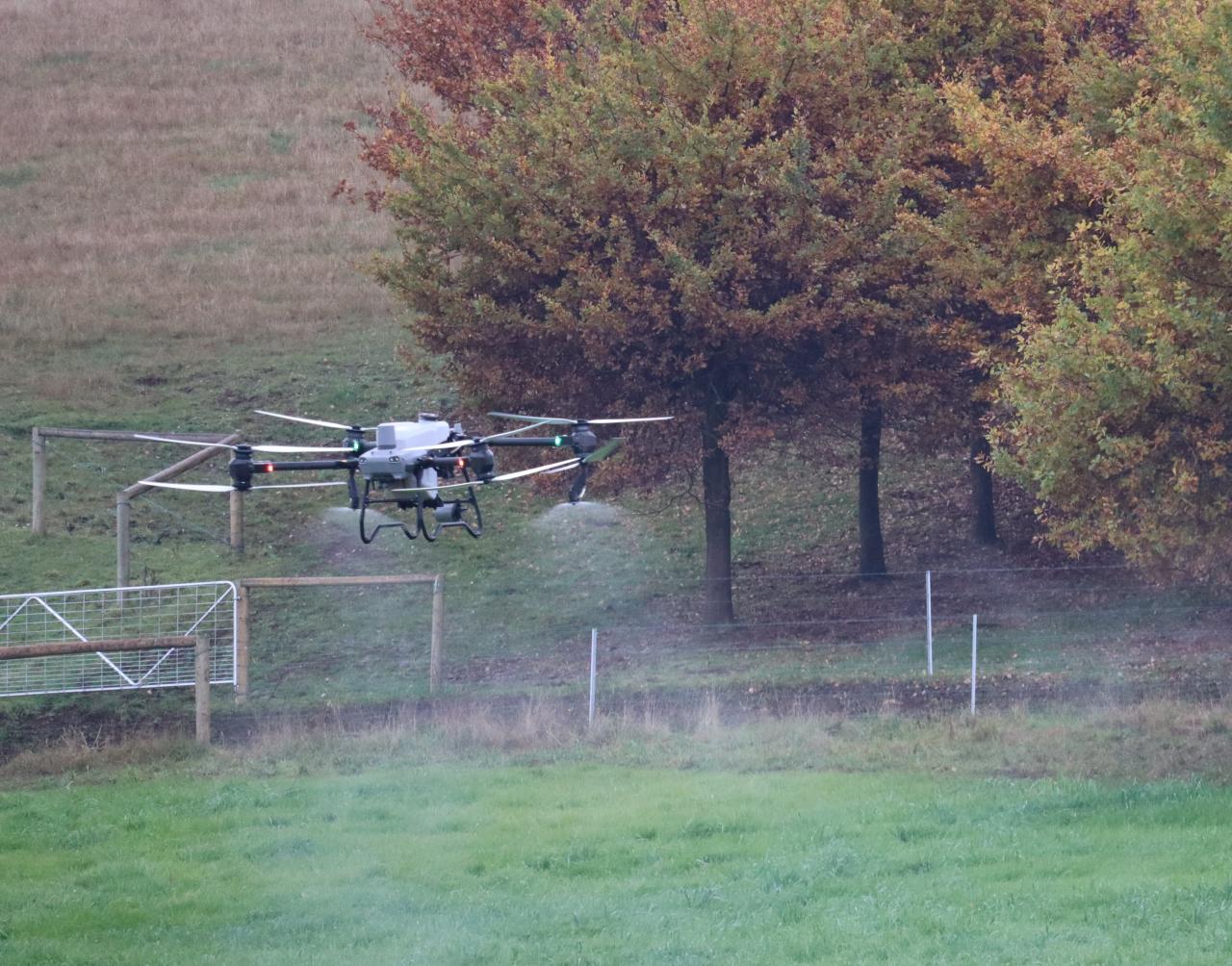
Marked worked as an IT engineer for 27 years before deciding to switch from the server rooms to “more fun stuff” doing technical production on films, documentaries and television commercials and getting out and about on farms for engineering projects.
“Last year I made the decision to get into the ag drone space and while Australia has been slow to adopt this technology, mainly because regulations are still catching up, I can see that changing.
“In Argentina they put up 20,000 drones in a year while we did 300.”
The DJI drones that Mark uses are among the best in the world, and he enjoys talking to farmers about how he can use them to do a task that usually uses a tractor and a 30m boom spray with a drone that has an 11m spray width.
“People have a perception that farmers aren’t great with new technology but the takeup is great - - it’s not about total replacement all the time but having another tool in the shed.
“One spud farmer I know decided to go all drones so his paddocks full of spuds don’t have lines through them from spreading.
“He paid for the drone in the first season from increased yield due to no soil compaction.”
Drones are being used for farm mapping using multi-spectral cameras that analyse crops, grasses and soil conditions.
The drone then knows the health of the crop and land as it flies over it and when spraying can choose where it’s actually needed rather than cover the whole area.
“We’ve had spray from a tractor at 50 litres per hectare reduce to 30 litres from a drone,” Mark said.
“Another farmer uses one to spray microbials rather than use urea to boost nitrogen levels.”
“One farmer in Queensland has six of them that land on a semi-trailer that he carts around.
“These results remind me that farmers are the greatest engineers and inventors in the country.”

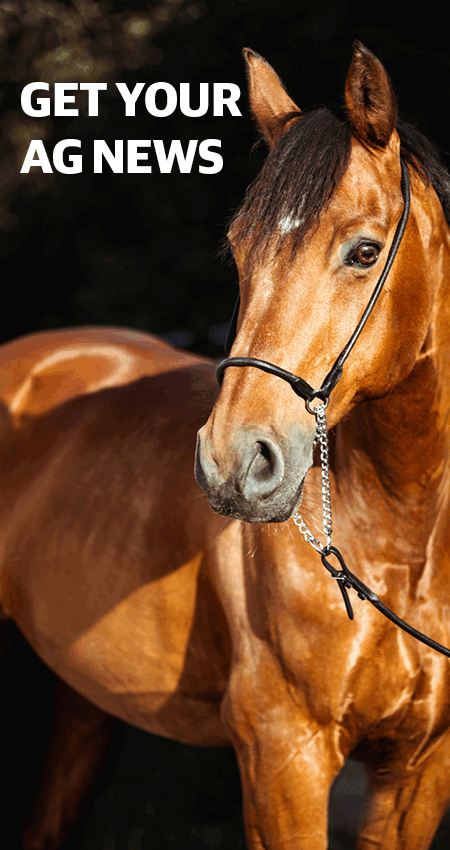
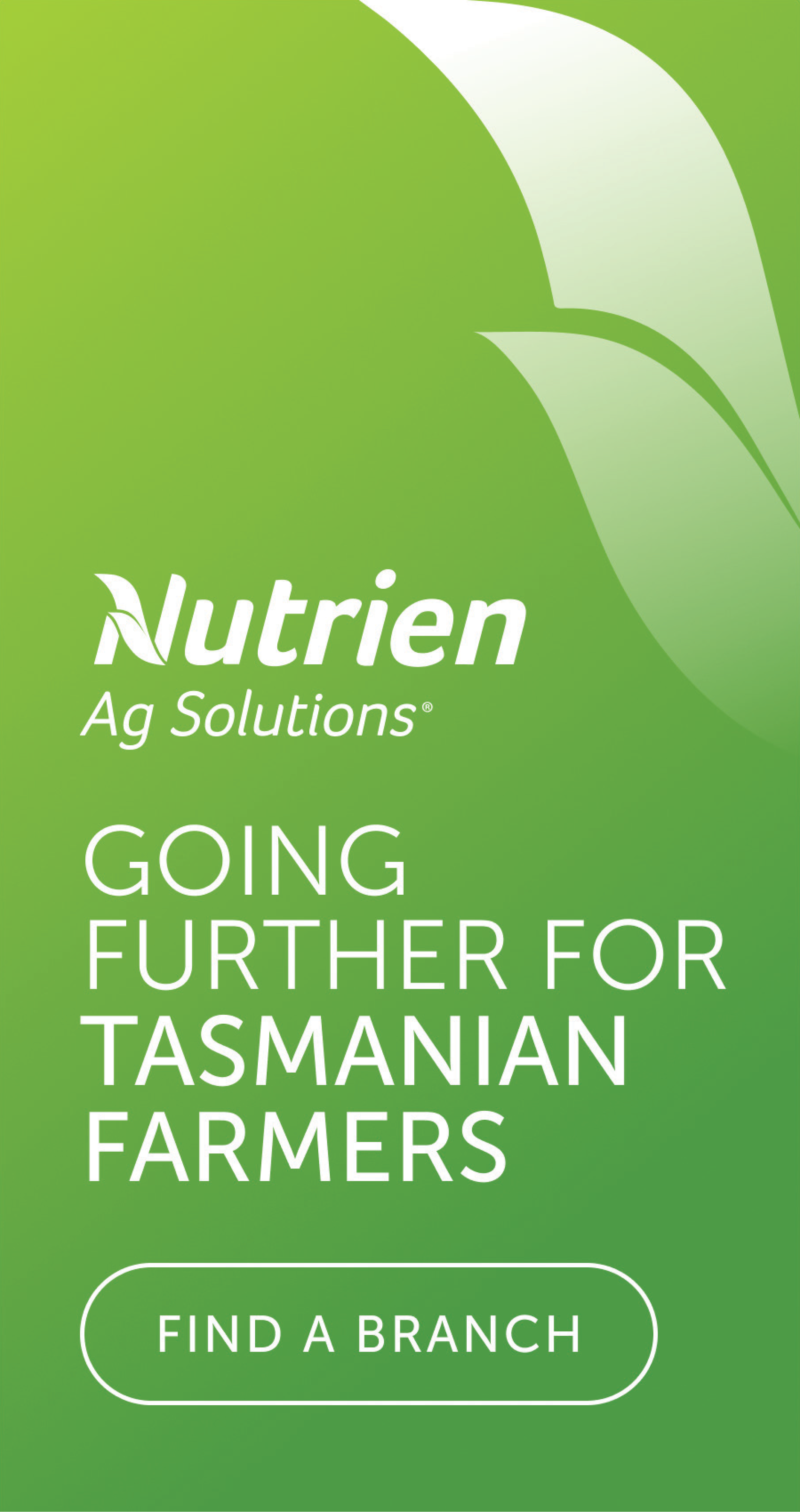

Add new comment